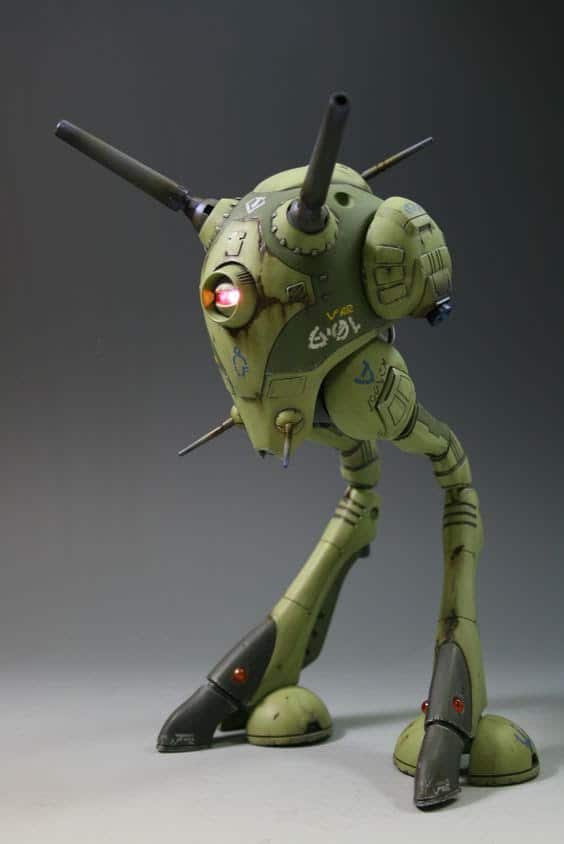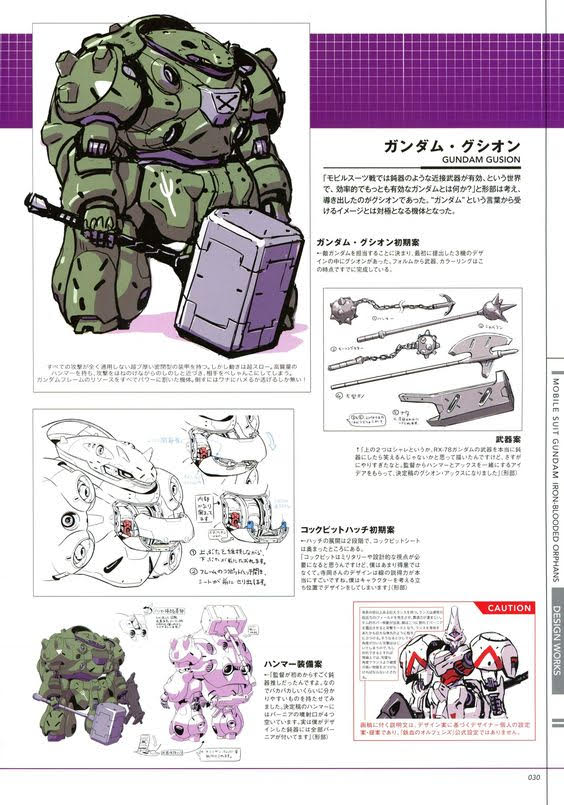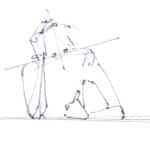Learning how to draw mecs is fascinating for many designers.
I am a fan of Transformers, Gundam, Star Wars… but drawing the mechs was crazy hard!
Till I figure out it would be essential to start drawing the skeleton first.

“How to draw mecs?”
Asked Josh (one of my students at “Sketch Like The Pros“)
His job as a designer may require him to create mechs and robots,
and he would need some drawing tips to start :).
To make it short, a mech is somehow animated like a human or animal.
Even though it is about concept art,
we share the same articulated structure type made of bones and joints.
TIP 1 Draw the skeleton first!
I invite you to watch the short video below and train on existing mechs, organic bots, robots… you like.
(I’m using a creation from Alberto Petronio to illustrate my point)
- Step 1 – Spot the articulations, the joints
- Step 2- Link them.
- Step 3- Block the torso, the arm, and the muscles… simplify the forms.
Your drawing will start having a sense of animation!
If you start drawing the robot without the structure, you might end up with an awkward result.
Think of adding the metal wire structure to a sculpture made of clay.
As soon as you complete that, you will have completed 50% of the hard job!
The rest will be “detailing”.
TIP: The same structure can be used as a base to create an infinite number of mechs!
Drawing and understanding the skeleton from a side view will be precious information to draw it in perspective.

TIP 2 Come up with a story!
How to create interesting mechs?
That will help you if you have no idea or inspiration to start.
- Get inspired by humans, insects or animals…
to find specific features that will describe your character personality and skills.
- Translate the features within your forms.
For example.
A turtle might be covered with a shield and be more compact, and rounded for a better defense.
However, it might be slow to attack or escape.
While a grasshopper will have long legs, be agile, and be ready to jump to attack!
However, it may be more vulnerable!
TIP 3 Use reference pictures
Nature is a beautiful source of inspiration.
One of my teachers (Nicolas Weiss) in my design school used to tell me: “Nature never lies”.
– Get plenty of reference pictures of mechanical pieces
(Planes, machinery, sewing machines…)
I love studying them to improve my concept art drawings.
– List the trait of character you are looking for
(good side, enemy? Kind, angry, nervous…?),
and which weapon, or armor style you may like.
– To get more ideas faster, sketch with thumbnails.
Don’t worry about drawing in details. And don’t try to control everything.
You want to drop many rough ideas.
When you got a nice proposal, you can draw it bigger, with more details. 🙂
Remember to draw the skeleton first,
add in some major shapes without many details,
and sculpt along the way.


TIP: Add some numbers or codes on your mech’s surface.
You could add some scratches eventually.
Conclusion: Unleash Your Mech Designs!
Hey there, aspiring mech designers!
We’ve explored the exciting world of creating mechs by starting with their skeleton.
Here’s a recap to keep you inspired:
- Start with the Basics: Begin with simple shapes and forms to understand the core structure of your mechs. This approach will help you design more freely and innovatively.
- Visualize in 3D: Understanding perspective and how basic shapes transform in different angles is key to creating dynamic and engaging mech designs.
- Express Your Creativity: While drawing the skeleton, let your emotions guide your lines. Each sketch is a step towards developing your unique style.
- Practice and Experiment: Keep sketching, exploring, and pushing your limits. The more you practice, the more you’ll discover about form, function, and the endless possibilities in mechs.
So, grab your sketchbook, let your imagination run wild, and start designing mechs that not only look cool but also tell a story.
Remember:
- Embrace Imperfection: Your first sketches won’t be perfect, and that’s okay. It’s in the chaos of creation that the most innovative designs are born.
- Have Fun: Enjoy the process. Sketching mechs should be an adventure, not a chore. Let your passion for design shine through every line.
If you’ve enjoyed this journey or have any questions, drop a comment below or let me know if you’d like more tutorials like this. Let’s keep sketching together, and soon, you’ll find yourself not just drawing, but mastering the art of mech design.
Your passion for sketching will take you far, so keep going, keep dreaming, and keep having fun with your designs!
Happy designing!
Cheers,
Chou-Tac









Heck yea! I’m glad my question ended up making it as a full post! Hope it helps others as it helped me! Chou-Tac is a great teacher!
Hey Josh,
Thank you for being an inspiration
for the Design Sketchbook family
and all the readers of the blog!
Chou-Tac